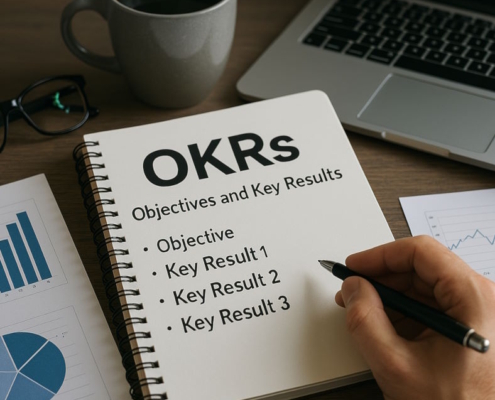1. Understanding Why You Feel Ready to Quit
First, understanding the source of your dissatisfaction is essential in deciding when to quit your job. Are you unhappy with specific aspects of the role, or is it the company culture, the industry, or something personal that’s prompting the urge to leave? Here are some key areas to examine:
- Job Satisfaction: Do you feel a lack of motivation, interest, or fulfillment in your day-to-day tasks? If the work has become monotonous, unrewarding, or doesn’t align with your strengths, it could be a sign it’s time to look elsewhere and consider when to quit your job.
- Management and Team Dynamics: If you don’t get along with your boss or feel unsupported by your team, this can create a toxic work environment. Poor relationships at work can impact productivity, mental health, and overall job satisfaction, making it important to evaluate when to quit your job.
- Company Culture: Sometimes, a role may seem ideal, but the company culture isn’t a fit. If the company’s values or work style clash with your own, this disconnect can lead to frustration over time, reinforcing questions about when to quit your job.
- Compensation and Benefits: If you feel underpaid, lack benefits, or believe your compensation doesn’t reflect your contributions, this financial dissatisfaction can be a motivator to consider other roles that value your skills more appropriately and weigh the idea of when to quit your job.
- Career Growth and Development: Stagnation in career development can lead to frustration. If you feel there’s little room for advancement, learning opportunities, or a clear path to grow within your organization, it may be time to seek an environment that offers professional growth, and when to quit your job could be an important consideration.
2. Signs It May Be Time to Quit
Once you’ve analyzed your dissatisfaction, assess for signs that quitting may be the right choice. Here are some common indicators to help you determine when to quit your job:
- Consistent Burnout and Stress: If you find yourself consistently exhausted or overwhelmed, it may be time to reconsider when to quit your job. Chronic stress can have severe effects on both physical and mental health, and if it seems like your workload or the pressure won’t change, a new job might offer better balance.
- Lack of Motivation or Passion: If you’re dreading work each day or find it hard to stay motivated, it’s possible the role no longer aligns with your interests or strengths. Passion and motivation are crucial for job satisfaction, and lacking them long-term could indicate it’s time for a change. Knowing when to quit your job can help in finding a role that reignites your enthusiasm.
- Unfair Treatment: Any persistent pattern of discrimination, harassment, or unfair treatment should not be ignored. If attempts to resolve these issues internally have failed, it may be best to seek a healthier work environment, marking an important point in deciding when to quit your job.
- Alignment with Personal Values: Working for a company that doesn’t match your ethical standards can create an internal conflict. For instance, if the organization’s practices clash with your values, that tension can impact your job satisfaction and self-esteem. In such cases, when to quit your job is a crucial question to address.
- Better Opportunities on the Horizon: If you’ve received a compelling offer from another company or see potential opportunities that align more closely with your career goals, it may be wise to consider leaving your current position. Evaluating when to quit your job in this context can open doors to new career paths.
3. Considerations Before Quitting
Leaving a job can be both empowering and risky. Before making any final decisions about when to quit your job, consider a few practical elements to ensure you’re making the best choice:
- Financial Readiness: Ensure you have financial stability, ideally with a buffer for living expenses, before quitting. Even if you have a new job lined up, a financial cushion can help with unexpected delays or costs, allowing you to focus on when to quit your job with confidence.
- Career Goals and Future Growth: Consider how this decision aligns with your long-term goals. Sometimes, staying in a role a bit longer may be beneficial to gain additional experience or skills that will serve you in your next position. This can be a critical element in determining when to quit your job.
- Alternative Solutions: Before quitting, try discussing your concerns with management or exploring internal transfers. In some cases, a change in responsibilities, department, or even work location can provide a fresh perspective without the need to leave entirely, giving you a clearer sense of when to quit your job.
- Job Market Conditions: Assess the current job market in your industry. If you’re considering leaving without another offer lined up, make sure you’re familiar with job availability and hiring trends in your field, as timing is key to knowing when to quit your job.
4. Taking Practical Steps to Make a Smooth Transition
If you’ve evaluated your decision and are ready to quit, planning your transition thoughtfully will minimize disruptions and support your next steps. Here are some strategies to consider when to quit your job:
- Update Your Resume and LinkedIn: Before you officially give notice, ensure your resume and LinkedIn profile reflect your most recent accomplishments and skills. Highlight your achievements, especially those that align with your future goals and mark a key point in understanding when to quit your job.
- Research New Opportunities: Look into job openings that match your skill set and career ambitions. Setting up job alerts on sites like LinkedIn, Indeed, and industry-specific job boards can help you stay on top of new roles and assess when to quit your job.
- Network and Seek Referrals: Start reaching out to former colleagues, mentors, or contacts in your field. Let them know you’re exploring new opportunities, as referrals can help speed up the job search and play an essential role in deciding when to quit your job.
- Give Proper Notice: Once you’ve secured a new role or made the decision to leave, provide your current employer with at least two weeks’ notice. This professionalism can help maintain good relations with your employer and colleagues and assist in managing when to quit your job.
- Offer Assistance with Transition: If possible, offer to help train your replacement or prepare documentation that will ease the transition for your team. Being supportive during your departure can leave a lasting positive impression and influence when to quit your job.
5. What to Do After You Quit
After giving your notice, you’ll likely experience a mix of excitement and uncertainty. Here are some ways to navigate the time following when to quit your job:
- Take Time to Reflect: Use the period between roles to reflect on what you enjoyed about your previous position and what you hope to find in the future. This clarity will help you choose roles that align better with your goals and validate when to quit your job.
- Set New Career Goals: Now that you’re on a new path, set specific goals for the type of role, work environment, and achievements you hope to accomplish. Having a vision will guide your job search and career trajectory as you move past when to quit your job.
- Invest in Skill Development: Consider upskilling or learning new competencies that will increase your value in the job market. There are numerous online courses, workshops, and certifications that can enhance your qualifications and solidify your timing of when to quit your job.
- Maintain Professional Relationships: Keep in touch with former colleagues or supervisors who were supportive during your tenure. Maintaining these connections can help you in future career opportunities, as networking remains a key aspect of professional growth and supports your choice of when to quit your job.
- Focus on Health and Well-being: Leaving a stressful job can be a relief, but it’s also an ideal time to focus on self-care. Engage in activities that rejuvenate you, both mentally and physically, so you’re ready for the challenges of a new role after deciding when to quit your job.
Final Thoughts
Deciding when to quit your job isn’t always easy. It requires self-reflection, practical preparation, and confidence to make a move that aligns with your goals. By assessing the reasons for your dissatisfaction, identifying your career objectives, and taking proactive steps to prepare for your transition, you can make the decision with clarity and confidence.
Remember, career paths are rarely linear, and each step—whether staying in a role or moving on—can contribute to your long-term success and satisfaction. Trust yourself, take the time you need to make an informed decision, and embrace the possibilities that lie ahead as you decide when to quit your job.






























